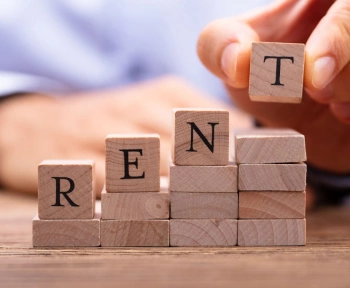How to Handle Unauthorised Sublets
Running a rental business or property can sometimes be a daunting task – the last thing anybody needs is unauthorised sublets. Unauthorised sublets can be caused by a wide range of reasons, including tenants subletting to tenants who may be breaching a contract or other agreement. Taking appropriate action as soon as possible is essential in order to protect yourself and the property.
What is an Unauthorised Sublet?
An unauthorised sublet is when a tenant rents, leasing or letting a property that they do not own, in this case without permission from the landlord or property owner. As such, the tenant or sub-tenant is not on the tenancy agreement and does not have the permission of the landlord or property owner to stay there.
How to Spot Unauthorised Sublets?
There are a few signs which may indicate an unauthorised subletting of your property. Firstly, there may be more than the agreed number of persons living in the property. Secondly, there may be signs of additional people, or people staying in different rooms who are not listed on the tenancy agreement. Lastly, you may also spot a change in the way the property is being used, for example if it has suddenly become a student dormitory, or perhaps a place of business.
What are the Potential Consequences?
There are a variety of issues that can arise if an unauthorised subletting goes unchecked. These can range from financial issues to legal issues. Perhaps most notably, financial issues can arise if the rent for the property is higher than would normally be charged for a standard tenancy agreement. There can also be legal consequences, as if permission for subletting was not given or approved by the landlord, then this could be seen as an act of trespass and even a breach of contract.
How to Handle Unauthorised Sublets?
1. Investigate the Situation
If you suspect an unauthorised subletting, it is important to take steps to investigate the situation as quickly as possible. If the tenant has breached their tenancy agreement, then you should take action as soon as possible to bring the situation back under control.
2. Notify the Tenant
Once the investigation is complete, it is important to send a written notice to the tenant informing them that they are in breach of the agreement and that steps will need to be taken in order to rectify the situation. This could include a warning or a request to remove the tenant permanently, depending on the situation.
3. Request Documentation
After sending the notification, it is important to request documentation from the tenant to confirm their identity and the identity of the sub-tenant. If they are unable to provide this information, or the information provided is not sufficient, then the tenant may be asked to leave the property.
4. Follow Up Action
Once the tenant has been notified and provided the appropriate documentation, then it is important to follow up on the situation with any further action that may be necessary. This could include the initiation of legal action or proceedings, the inspection of the property, or any other steps necessary to bring the situation back under control.
What to Remember?
- Investigate the situation immediately.
- Notify the tenant as soon as possible.
- Request appropriate documentation.
- Take follow-up action where necessary.
- Always check tenancy agreements before letting a property.
- Talk to your tenants regularly in order to maintain communication.
Conclusion
In conclusion, it is essential to be aware of how to spot an unauthorised subletting and take appropriate steps if it occurs. It is also important to be mindful of the potential consequences and take appropriate action if necessary. By following the steps outlined above, landlords should be able to quickly identify and handle unauthorised sublets.
Q: What are the consequences for tenants who illegally sublet?
The consequences for tenants who illegally sublet can vary depending on the local laws, but generally tenants can face significant fines and/or eviction. In some cases, the landlord may also take legal action to recover monetary damages. Illegal subleasing can also have an impact on the tenant’s credit and can even result in criminal prosecution.
Q: What happens if a tenant is found to be illegally subletting their property?
A: Depending on the jurisdiction, a tenant found to be illegally subletting their property may be required to terminate the subletting arrangement, and may face legal consequences, such as eviction. The landlord may also be able to seek damages from the tenant for any income lost due to the subletting, and could also sue the tenant for breaking the lease agreement.
Q: Can a landlord evict a tenant for illegally subletting their property?
Yes, a landlord can evict a tenant for illegally subletting their property. The landlord should ensure any breaches of the lease agreement are documented and documented in writing to the tenant. The landlord should then provide notice to the tenant outlining the terms of the breach and notice that they intend to terminate the lease. The landlord should also provide the tenant with a reasonable amount of time to address the breach or move out of the property before the lease termination takes effect. Depending on the state, the landlord may also have the right to bring an action against the tenant for unpaid rent, damages, loss of income, or other costs incurred as a result of the illegally subletting.


